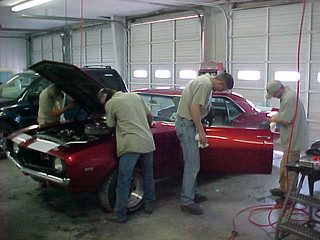
Going through the at fault driver’s insurance.
Using the liability policy on the at-fault driver’s insurance has advantages and disadvantages. It does help you avoid having to make any claim on your own insurance, which could prevent any increase in premiums, but it can take weeks for the at-fault party’s insurance provider to determine fault. This can be true even when fault seems obvious. People cannot always wait that long, that’s why many opt to work through their own insurance provider.
Going through your own insurance.
This is typically the quickest way to get things done. However, under your own policy, you will typically be required to pay a deductible. Many people do not realize that regardless of which insurer you use for the property damage, the insurer of the party who was not at fault will eventually be reimbursed behind the scenes. When this happens, you will get your deductible back. So, if you have the money, it may be wise to just pay the deductible and use your own collision coverage for your property damage.
Getting the repair done.
The adjustor will either arrange to see your car and write up an appraisal himself, or he will ask you to take the car to multiple auto body shops to get estimates. He or she will seek to pay you the lowest amount. Remember that you can take it to your own choice of auto body shop and have them do an estimate as well. The sooner you and your adjustor agree to a fair estimate, the sooner he will write you a check. Many insurance companies send you to their preferred shops. This may be the quickest and easiest way for you, but it is also the cheapest for the insurance company so you may not be getting the highest quality work.
In the event that the estimate is for more than the fair market value of your car, the adjustor will deem your car “totaled.” This means that it is cheaper for the insurance adjustor to pay you the fair market value of your car than to fix your car, so he or she will opt to do that. Remember that you can negotiate the fair market value, but you cannot use things like Blue Book Values. The insurance company will only care what similar cars are actually currently selling for in your geographical area. Once you have agreed upon an amount, you can either accept that amount in exchange for your wrecked car, or you can deduct the salvage amount of your car, keep the car, and take that lower amount.
If you have bodily injuries in addition to just property damage, the process is far more complicated. You will best serve your interests by hiring an experienced personal injury attorney.
This article is offered only for general information and educational purposes. It is not offered as and does not constitute legal advice or legal opinion. You should not act or rely on any information contained in this article without first seeking the advice of an attorney.
Photo by HoweAutoBodyShop
